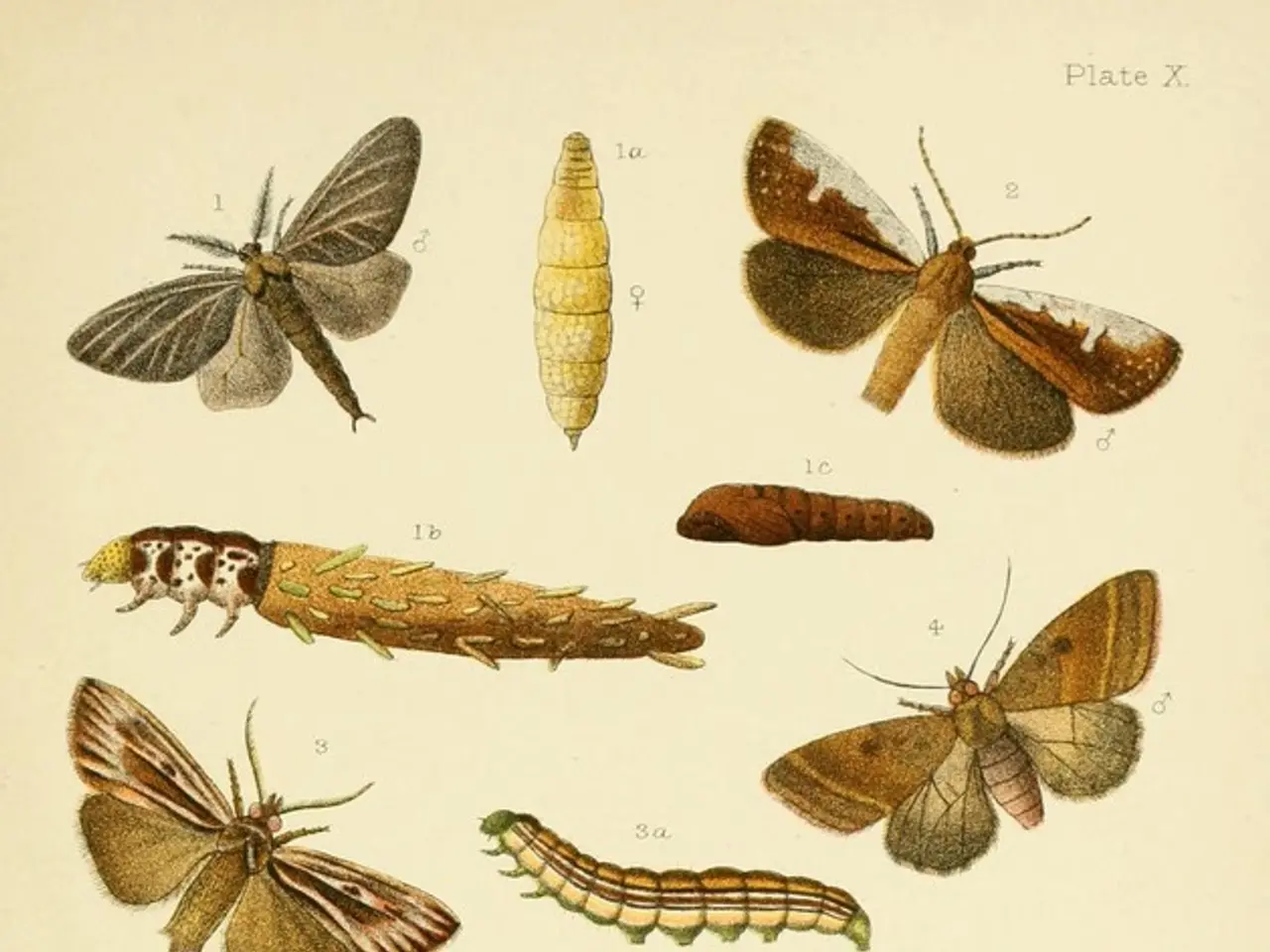Unveiling a Fragment of the Moth Kingdom: Exploring Approximately 160,000 Moth Species and Their Categories
Discovering the Diverse World of Moths
Moths, often overlooked relatives of butterflies, are a fascinating and diverse group of insects. With over 160,000 species worldwide, they come in a variety of sizes, colours, and habits.
Luna Moth (Actias luna)
One of the most striking moths in North America is the Luna Moth. Large and pale green, it boasts long tails on its hindwings and eye spots. Unique among moths, Luna Moths are nocturnal and non-feeding as adults, living mainly in deciduous forests of North America, especially near hickory, walnut, and sweetgum trees.
Atlas Moth (Attacus atlas)
The Atlas Moth, native to tropical and subtropical forests in Southeast Asia, is one of the largest moths in the world, with wingspans up to 25 cm. Its wings are brown, reddish, and orange, adorned with triangular "snake head" patterns on the tips.
Hawk Moth (Sphingidae family)
Medium to large, streamlined, and fast-flying, Hawk Moths are found worldwide, inhabiting diverse ecosystems from deserts to rainforests. Known for their hovering flight, reminiscent of hummingbirds, they feed on nectar.
Silk Moth (Family Saturniidae)
Generally large-bodied with robust wings and often striking patterns or eye spots, Silk Moths are found in various forests. Many silk moth larvae produce silk cocoons.
Tiger Moth (Subfamily Arctiinae)
Medium-sized moths with bright, contrasting colours like orange, black, and white, Tiger Moths occur in diverse habitats, including meadows, forests, and urban areas worldwide. Their larvae, known as woolly bears, are hairy and distinctive.
Codling Moth (Cydia pomonella)
A small moth with generally brownish gray banded wings, the Codling Moth is an infamous pest of apple, pear, and walnut orchards. It is found in temperate fruit-growing regions globally.
Io Moth (Automeris io)
The Io Moth, with its medium size and bright yellow hindwings adorned with large eyespots, is a common sight in eastern North American deciduous woodlands and fields. The eyespots are thought to deter predators.
Rosy Maple Moth (Dryocampa rubicunda)
Native to eastern North America, the Rosy Maple Moth is small, vibrantly coloured pink and yellow. It lives primarily in deciduous forests where maple trees—the main larval host—are found.
Box Tree Moth (Cydalima perspectalis)
Originally native to East Asia, the Box Tree Moth is now widespread in Europe and North America, posing a growing concern. Its larvae feed exclusively on boxwood shrubs, often causing severe defoliation.
Wax Moth (Galleria mellonella and Achroia grisella)
Small moths whose larvae feed on honeycombs and beeswax, Wax Moths are found globally where beekeeping is practiced, often proving a pest in apiaries.
For more information about these fascinating creatures, visit your local natural history museum or botanical garden. Embrace the beauty and diversity of moths and learn to appreciate these often-overlooked insects!
References: 1. BBC Earth 2. National Geographic 3. Butterfly Conservation 4. The Moths of North America Project







